Double Dip for USA Men’s, Women’s Water Polo: Group A Winners at 2019 Pan Am Games
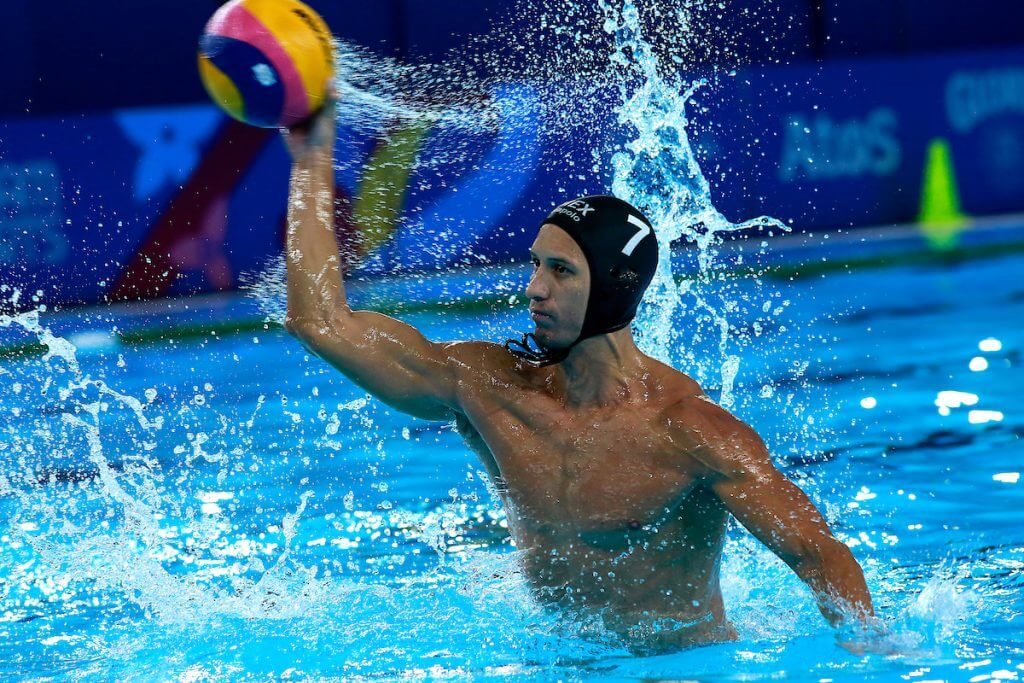
LIMA, PERU. Day Three of the 2019 Pan American Games was good all-around for the U.S. men’s and women’s national water polo teams, as both captured the top spots in their respective groups by virtue of lopsided wins. In morning play at the Villa Maria del Triunfo Aquatics Complex, the USA women broke out to a 16-0 first half lead and then substituted in goal, freeing Ashleigh Johnson to play the field, in a 23-3 win over Venezuela.
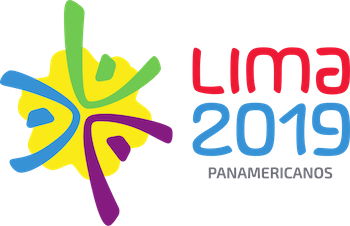 The USA men did not change their goalie—though Johnny Hooper, who had a five-goal game Monday in a crucial Group A win over Canada, was not in attendance—but enjoyed even more success in a 24-1 thrashing of Puerto Rico. Running out to a 17-0 lead, Misael Andino Montanez broke the Americans’ shutout bid with a goal a minute in.
The USA men did not change their goalie—though Johnny Hooper, who had a five-goal game Monday in a crucial Group A win over Canada, was not in attendance—but enjoyed even more success in a 24-1 thrashing of Puerto Rico. Running out to a 17-0 lead, Misael Andino Montanez broke the Americans’ shutout bid with a goal a minute in.
Free Ashleigh!
The end result for both American teams was the same; undefeated romps through group play and contests in Thursday’s quarterfinal round against Peru. The host teams are competing in Pan American water polo play for the first time ever and have not been competitive. Therefore, it’s possible that Johnson will again be freed from the American cage in search of a second goal as a field player. After whiffing on a five-meter penalty attempt in the third, Johnson, who backstopped Team USA to gold at the Rio Olympics, rifled home a goal with a minute and a half remaining in the final period, closing out American scoring.
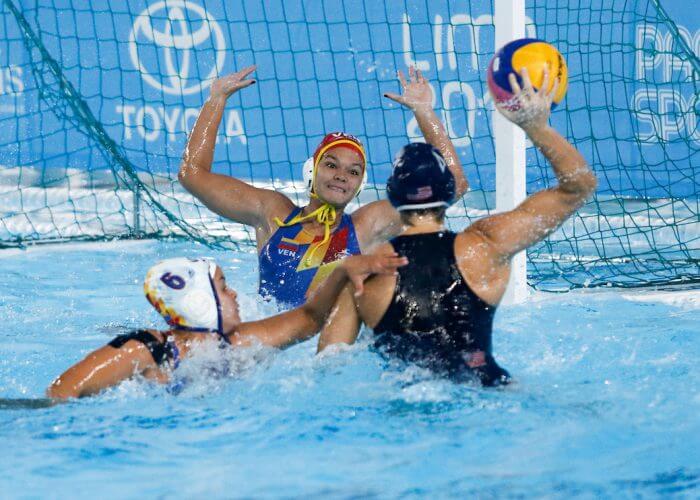
USA’s Rachel Fattal, with sisters Soleylin and Soleimar Martínez defending. Photo Courtesy: Paul Vallejos / Lima 2019
A goal in international play is always cause for celebration, but this score—with teammates and USA fans in the stands cheering Johnson on—made for a noteworthy moment in an otherwise forgettable match. Afterwards, Johnson spoke about her opportunity to escape the American net.
“I’m rusty! Not being in the field for a while, not having to swim… I have a new appreciate for the field players now,” she joked, but then turned serious.
“I really enjoy not just being in the goal, but preparing team-wise for any situation. I could get injured, something could happen—somebody’s going to need to step it up and get into the cage.”
First into the American cage after intermission was Rachel Fattal, who gave up a goal to Venezuela’s Soleylin Martinez, breaking up the shutout. Fattal was replaced later in the third period by Melissa Seidemann, who allowed two goals to Samantha Torres.
[Krikorian: Johnson, World’s Top Polo Goalie, Plays Field Because of IOC, Possible Injury]
After the match, U.S. Head Coach Adam Krikorian brushed off any suggestions about the novelty of his decision. He spoke of tangible reasons why having a field player in goal is a logical by-product of the 2017 International Olympic Committee’s (IOC) decree that cut men’s and women’s water polo rosters from 13 to 11 for the Tokyo Games.
“With the rules the way they are now, if our goalie were to get injured in the middle of the game, it would be an embarrassing situation for our sport,” Krikorian said. “You would be sending out a player in the goal who would be inexperienced and unable to play the position effectively.
“It would ruin the rest of the game.”
This is not just idle talk; many coaches have spoken out about the safety issues inherent with reduced rosters, particularly goalies who are perhaps most prone to concussion injuries. Speculation has centered on a push to add an extra roster spot so that teams participating in 2020 Olympics will be allowed two goalies on the roster as a hedge against injury.
Playing the Peruvians
Goalie play will not be an issue for either American team come Thursday; they will face Peruvian teams that in Group B play have scored a combined total of 24 goals—16 by the men, 8 by the women—while surrendering 109. The average age of the Peruvian women is 18 years old and the roster includes a 15-year-old, who has been playing polo for two years, and a 16-year-old.
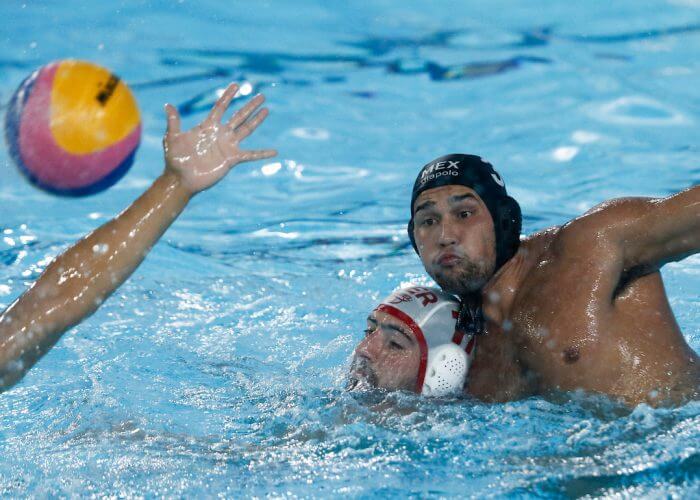
Peru’s Augusto Otero (white cap) fighting off Mexico’s Daniel Velasquez Photo Courtesy: Paul Vallejos / Lima 2019
Despite the steep challenge ahead, Augusto Otero, captain for the Peruvian men’s team, is excited for the opportunity to compete against one of the world’s better polo sides.
“We didn’t want to play the U.S., but at the same time it’s going to be a great experience,” he said after his team fell short in a 14-8 loss to Mexico. “Being able to play [against] amazing players is going to be a once-in-a-lifetime opportunity.”
The U.S. women will play first, at 12 p.m. EST. The American men will play at 7 p.m. EST. Both are certain to advance to semifinal match-ups on Friday.
Group play is over; on to the Quarterfinals
By end of day Tuesday, all quarterfinal match-ups were settled, with no surprises. After a 20-11 victory, Canada, runner-up to the US in Group A men’s play, will face Mexico. The winner will move to the semifinals, where they will likely face the winner of the crossover match between Group B winner Brazil and Puerto Rico, which finished last in Group A. In the final men’s crossover contest, Argentina will face Cuba; the winner likely gets the U.S.; this represents a golden opportunity for Head Coach Dejan Udovicic’s squad to advance. They’ve already beaten the Cubans decisively in this tournament, and the Argentine squad hasn’t beaten the Americans in more than 50 years but is relatively experienced in international play.
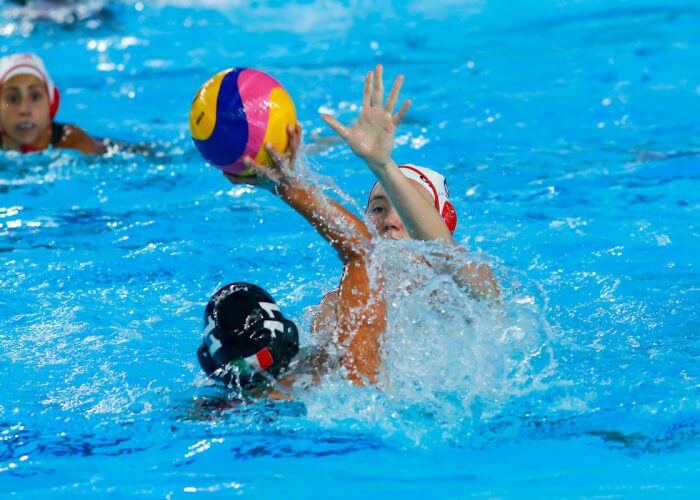
Mexico’s Lucia Carballo Chanfon and Canada’s Hayley Mckelvey. Photo Courtesy: Jose Tejada / Lima 2019
The women’s side appears to be equally tilted towards American prospects for gold. After Peru, Krikorian’s team will face the winner of either Brazil, which finished second to the U.S., or Mexico. Canada—almost assured of a victory over Venezuela—will likely get the winner of Puerto Rico versus Cuba, the other crossover match. None of these teams are a serious threat to ether the Canadians or the Americans, meaning that a collision between the top two teams in the tournament is highly likely.
Canada’s Hayley Mckelvey—fresh off of her senior season at USC—would not speculate on what’s ahead but rather on taking each game as it comes.
“We’re preparing for each next step and building on the progress we’ve made this summer,” she said after her team had beaten Mexico by the score of 27-6. “Building, building, building as the games come.”
Left unsaid is how tough the Americans have been of late. During their winning streak, which has now reached 56-straight, the U.S. has beaten the Canadians five times, with no match closer than five goals.



